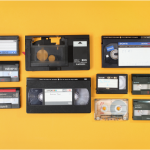Every parent and educator wants to give children the best possible start in life. During the first three years, a child’s brain develops rapidly, forming the foundation for all future learning. The right early developmental toys and activities can make a significant difference in supporting this crucial growth period.
Understanding which toys support different stages of development can help you create an environment where young children can thrive. From sensory exploration to problem-solving, the right materials encourage natural learning processes and help children reach important developmental milestones.
The Foundation Years: Birth to Three
The period from birth to three years represents the most rapid phase of brain development in a child’s life. During these early years, children are naturally driven to explore, manipulate, and understand their environment. Every interaction with toys and materials creates neural pathways that support future learning.
Developmental toys designed for infants and toddlers focus on building fundamental skills across multiple areas. These include fine and gross motor development, sensory processing, cognitive growth, and early communication skills. The beauty of well-designed developmental toys lies in their simplicity—they invite repeated exploration without overwhelming young minds.
Essential Categories of Developmental Toys
Teething and Grasping Toys
The earliest toys a child encounters often serve dual purposes: providing comfort during teething and supporting the development of grasp reflexes. These toys help babies strengthen their grip, improve hand-eye coordination, and explore different textures safely.
Natural wooden teething toys offer particular benefits, as they’re free from harmful additives and provide varied tactile experiences. Rattles, rings, and specially designed grasping toys encourage babies to reach, grasp, and transfer objects between hands—all crucial skills for later development.
Stacking and Sorting Activities
As children grow, stacking and sorting toys become invaluable tools for learning. These activities support spatial reasoning, problem-solving, and the understanding of concepts like size, colour, and sequence. Simple ring stackers teach cause and effect, while shape sorters introduce basic geometry concepts.
The repetitive nature of stacking and sorting activities helps children develop persistence and focus. Each attempt teaches something new, whether it’s about balance, spatial relationships, or the satisfaction of completing a task.
Sensory and Discovery Play
Sensory toys engage multiple senses simultaneously, supporting crucial neural development. Toys that make sounds, have interesting textures, or respond to a child’s actions help build understanding of cause and effect while encouraging exploration.
Discovery toys often feature elements like spinning parts, moveable pieces, or hidden compartments. These features captivate young attention spans while building curiosity and investigative skills that form the foundation for later scientific thinking.
Push and Pull Toys
Once children begin moving independently, push and pull toys support gross motor development while encouraging active play. These toys help develop balance, coordination, and spatial awareness as children navigate their environment.
The simple action of pulling a toy behind them or pushing one forward gives toddlers a sense of control and accomplishment. Many push and pull toys also incorporate other learning elements, such as shape sorters or musical components.
Creating Musical Experiences
Music plays a vital role in early development, supporting language acquisition, rhythm recognition, and emotional expression. Simple instruments designed for young children—such as drums, xylophones, and shakers—introduce basic musical concepts while developing motor skills.
Musical toys often encourage social interaction when children play together, sharing instruments and creating sounds collaboratively. This type of play supports communication skills and emotional development alongside musical appreciation.
Early Puzzle Experiences
Puzzles designed for infants and toddlers introduce problem-solving in an age-appropriate way. Large knob puzzles help develop fine motor skills and hand-eye coordination, while simple shape puzzles teach spatial relationships and persistence.
The key to successful early puzzle experiences lies in choosing puzzles with the right level of challenge. Too easy, and children lose interest quickly; too difficult, and they become frustrated. Well-designed toddler puzzles grow with the child, offering multiple ways to engage and learn.
Supporting Language Development
While often overlooked, many developmental toys support early literacy and language skills. Board books designed for babies introduce the concept of stories and book handling. Simple picture books with sturdy pages allow independent exploration while building vocabulary and understanding of narrative structure.
Interactive books that incorporate textures, sounds, or moveable parts engage multiple senses while supporting language development. Reading together with these materials creates positive associations with books and learning.
Quality and Safety Considerations
When selecting developmental toys, quality and safety should always be paramount. Natural materials like solid wood offer durability and safety advantages over plastic alternatives. Well-constructed toys withstand repeated use and often improve with age, developing a patina that speaks to their enduring appeal.
Safety features such as smooth edges, non-toxic finishes, and appropriate sizing for different age groups ensure that children can explore freely without risk. Quality toys also tend to be more engaging, as their construction allows for the subtle details that capture and hold young attention.
Supporting Your Child’s Developmental Journey
Understanding your child’s current developmental stage helps you choose toys that will genuinely support their growth. Rather than rushing to more complex toys, allowing children to fully explore age-appropriate materials builds confidence and mastery.
The most effective developmental toys often have multiple ways to be used, growing with the child and remaining engaging over time. This approach not only provides better value but also allows children to deepen their understanding through repeated exploration.
Every child develops at their own pace, and the right toys can support this natural progression. By choosing thoughtfully designed developmental toys and allowing plenty of time for free exploration, you’re providing the foundation for lifelong learning and discovery.
Quality developmental toys represent an investment in your child’s future, supporting crucial early development while creating positive associations with learning and play. The right materials, combined with loving interaction and patient guidance, help children build the skills they need for success in all areas of life.
Ready to explore our complete range of developmental toys and resources? Visit EducationAll to discover carefully selected materials that support every stage of early childhood development, from birth through the toddler years and beyond.







